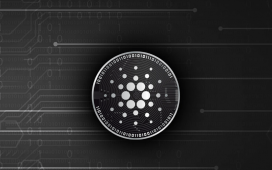The What’s New? Summit 2023, an esteemed event hosted by KIT Global and supported by The Economic Times, served as a forum for top marketing leaders, visionaries, and digital experts, to explore the way forward in this ever-evolving space. Additionally, the Summit also shed light on the latest trends, challenges, and innovations poised to shape the future of marketing.
Here are some of the key takeaways from the myriad discussions that took place at the Summit, underpinned by pertinent studies and research findings, shedding light on the exciting prospects shaping the world of digital marketing as we speak.
 ET Spotlight
ET SpotlightThe future of the digital marketing landscape
To comprehend the forces moulding this landscape, let’s first examine research studies that provide valuable insights into these transformations.
E-commerce’s Dominance: The exponential growth of the e-commerce industry, particularly accelerated by the impact of COVID-19, is no secret. According to a UN study, global retail e-commerce sales surged to $4.28 trillion in 2020, marking a staggering 27.6% increase from the previous year. Several other studies echo this trend, signalling a significant uptick in online shopping, with e-commerce sales expected to maintain their upward trajectory. This underscores the growing influence of e-commerce and underscores the imperative for businesses to embrace online retail as a fundamental element for growth and survival in the digital age.
The AI Revolution: The research conducted by Gartner and McKinsey highlights the transformative role that artificial intelligence plays in the field of marketing. AI is now instrumental for personalised recommendations, chatbots, and data-driven decision-making, equipping marketers with the tools to create more engaging and precisely targeted campaigns.Emerging Trends: Industry reports from Statista and Hootsuite focus on the significance of emerging trends in digital marketing. For instance, India has emerged as the world’s fastest-growing app market, with a projected 96% internet user penetration by 2040. Influencer and performance marketing, video content, and data privacy regulations are all gaining prominence, making them essential areas for marketers to focus on in their strategies.Spotlight on customised solutions for e-commerce
An intriguing trend is the shift of web marketers toward mobile apps, driven by factors such as reduced customer acquisition costs, improved customer loyalty, enhanced measurement capabilities and so on. Businesses are actively seeking partners capable of swiftly scaling operations and enhancing volume to accelerate their growth.
Rahul Khurana, Country Manager at KIT Global, shared valuable insights at the recent What’s New? Summit in Delhi. He said, “India is among the fastest growing markets, and with KIT Global, brands can expect a partner who possesses the global sophistication necessary in this new era of performance-centric marketing. We are committed to forge strong partnerships with our clients and make a positive impact on their bottom-of-the-funnel results. With this event we brought the industry leaders together to discuss India’s digital future.”
He added, “Our adaptability to diverse brands’ measurement tools is a cornerstone, with seamless integration into our clients’ platforms. In an industry that places a premium on trustworthiness, we actively integrate advanced anti-fraud tools to prioritise transparency. Furthermore, we advocate for automation and digital asset management tools as a foundational step, empowering startups and SMEs to make informed investments.”
Leveraging customer data platforms (CDPs) is also emerging as a game-changing strategy, with 71% of consumers today switching brands if communications lack personalisation. Khurana further pointed out that brands utilising CDPs are experiencing revenue boosts of 10 to 20%! However, in an era of stricter data protection laws, the real challenge lies in striking the right balance between hyper-personalisation and respecting data privacy.”
Acing e-commerce in the new ecosystem
In the past decade, consumer choices were limited when it came to making purchases. Fast forward to today, from offline to online, and even ordering via apps, options are plenty. What’s crucial as highlighted by the experts at What’s New? Summit, is that real-time data is now readily available to every brand, enabling them to adapt their strategies in real-time.
Gaurav Khatri, Co-founder of Noise, emphasised that consumers have evolved, becoming savvier and more informed. They now place greater trust in platforms, preferring to buy directly from direct-to-consumer (D2C) websites. They prioritise experiences, including quick commerce with instant delivery. Khatri further emphasised, “This shift in consumer behaviour is massive and irreversible. To succeed, we need to design delivery experiences, including packaging, that don’t compromise on delivering exceptional customer experiences. It’s about optimising for what the consumer desires, while keeping our business goals aligned with their needs.”
He also highlighted the importance of personalisation, saying, “Utilise the data you collect from purchases to optimise various aspects of your business strategy. For example, our journey into creating a product like the calling watch only began when we started analysing customer data to understand their preferences.”
Noise is now focused on building communities around its customers’ interests, such as cyclists, gym enthusiasts, and others and providing them with extraordinary experiences on their app. The brand constantly seeks innovation, with plans for smart rings and the first 4G watch, all driven by customer needs. Khatri stated, “Our goal is to offer 65% of what you’d find in a smartphone within a watch, and we’re actively working on achieving that.”
All eyes on performance marketing: Embracing the new era of opportunities
Experts at the recent What’s New? Summit in Delhi also emphasised that performance marketing gained prominence when advertisers demanded accountability for their investments based on concrete outcomes. Gauging how marketing investments contributed to a brand’s performance became crucial. However, with the proliferation of diverse channels, the landscape grew more intricate, as not all channels behaved alike. This necessitated different strategies and measurement methods.
Gopa Menon, Digital Head at Mindshare India, explained, “Each brand’s media mix varies based on its unique positioning and objectives. We employ various multi-touch cross-channel studies to evaluate performance. We also question whether we’re measuring the right parameters.”
Udit Malhotra, Head of Marketing at MG Motor India, stressed on the importance of measuring ROI extensively, stating, “We map the customer journey from the initial website visit to becoming an identified user within the ecosystem. This holistic analysis guides us from anonymity to identification, and ultimately to prospecting, bookings, and sales.”
Samriddh Dasgupta, CMO at Heads Up for Tails, spoke about the necessity of establishing a unique identifier spanning all channels before launching into a performance campaign.
Regarding the role of generative AI in addressing creative needs for performance marketing campaigns, the panel concurred that AI and ML in their current state provide directional intelligence. It is an enabler that can help scale up operations, but human intervention remains critical to solving the entire puzzle.
Powerful performance, privacy and AI in digital marketing
In the realm of digital marketing, ensuring durable performance increasingly hinges on navigating the ever-evolving landscape of privacy and user expectations. As highlighted by Alexei Archinov, Google Lead at gTech EMEA Emerging Markets, rising user expectations for ads privacy necessitate a privacy-centric approach. This involves respecting users while making campaigns effective and performance-driven.
Archinov stated, “Privacy readiness is integral to achieving marketing objectives, with privacy and performance going hand in hand. To power durable performance, we have built a system where clients, partners, and Google itself can exchange data without compromising personal information, facilitating insights and effective campaigns. Additionally, the launch of AI solutions enables automation, trend analysis, and tailored solutions based on user behaviour.” In a world where billions use Google products, key actions include “fostering meaningful customer relationships, engaging users with relevant communication, and leveraging data for targeting.”
Measurement today, Archinov added, isn’t just about campaign metrics but also about tracing the user journey from engagement to sale and beyond, preventing churn, and building a comprehensive understanding of your brand for the user. “Ultimately, insights derived from conscious audience engagement strategies are the driving force behind achieving sustainable growth in the digital marketing landscape,” he concluded.
Marketing in the age of AI: Beyond the wow factor
Shalini Pillai Banerjee, Head of Consumer Apps Marketing at Google India, reminded audiences that marketing is about connecting brands with users. While the ‘why’ remains unchanged, the ‘how’ has evolved dramatically due to the proliferation of different platforms in today’s digital era. Consumers now consume content in a matter of seconds to hours. For marketers, relevance is paramount, and this is where a combination of AI and generative AI comes into play, particularly in terms of content.
Banerjee noted, “Content needs to be relevant to users, and generative AI can assist with velocity, volume, and variation. For instance, you can utilise it for your core creative and spread it across the formats you need. It aids in creative testing, campaign optimisation, and measurement undoubtedly.”
When asked about the dollar impact of generative AI, Sumeet Singh, Group Chief Marketing Officer at Infoedge India Ltd., explained, “We are using generative AI in performance marketing, avoiding limiting cohorts and utilising tools for scalable creatives on platforms. This has led to significant gains, up to 30-35%, in certain businesses like real estate. We have seen enhanced efficiency, reduced production costs and agency retainer fees. It is also streamlining marketing automation processes and boosting productivity. This is not to say human intervention will not be needed, but let’s see its potential for what it is.”
As the evening came to a close, The What’s New? Summit 2023 illuminated the path ahead, where adaptability, innovation, ethics, and personalisation reigned supreme. It left attendees with the belief that the future of digital marketing holds prominence and promises exciting prospects and opportunities for those who dare to embrace the evolving landscape. With a commitment to relevance and a keen eye on e-commerce, AI, emerging trends, and personalised approaches, marketers are poised to shape the future of this dynamic industry.










